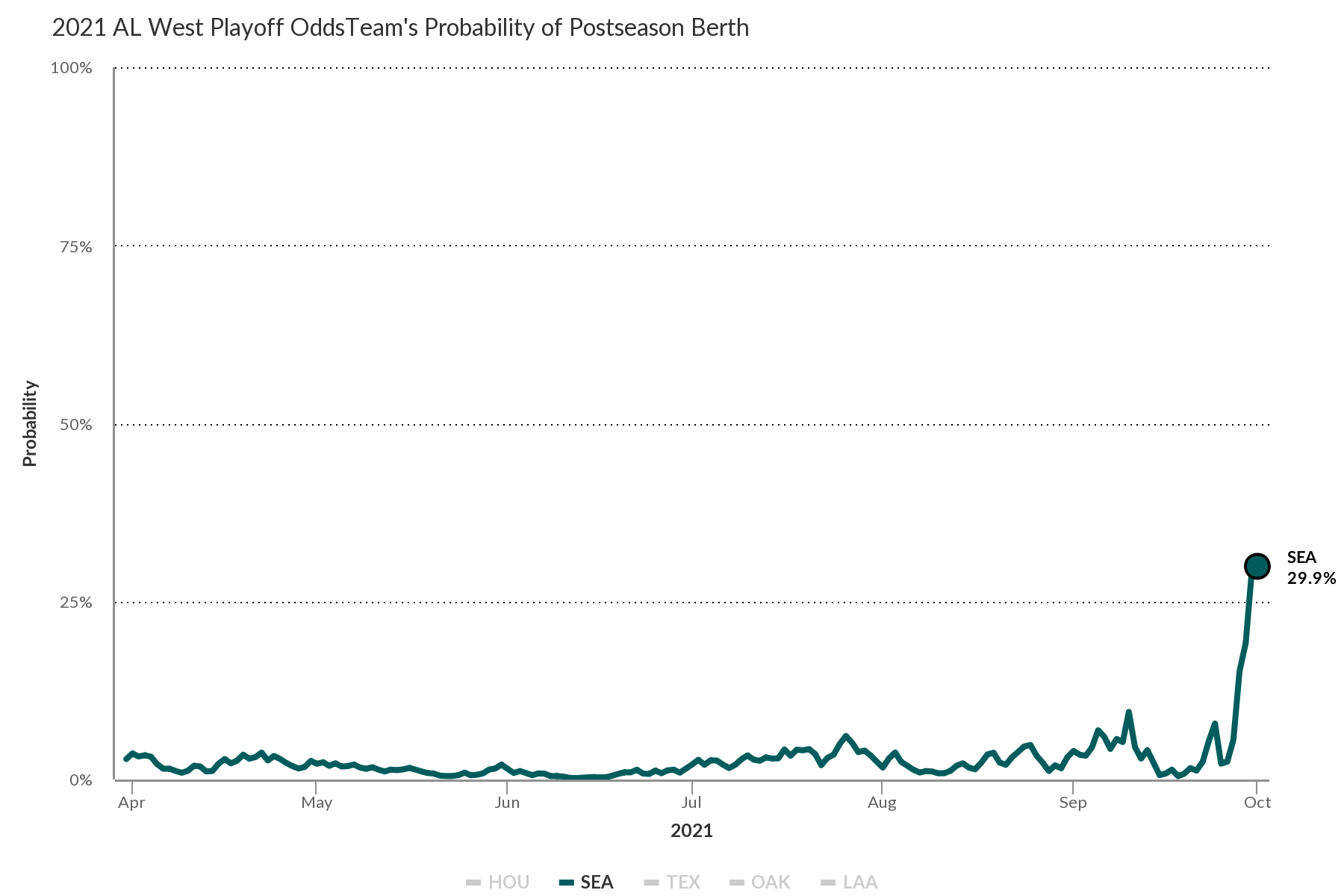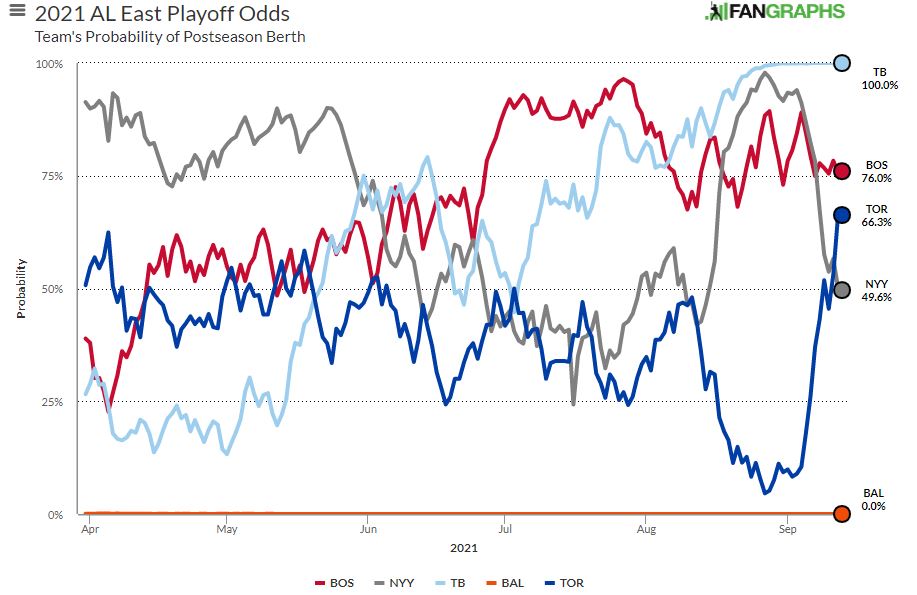These are notes on prospects from Brendan Gawlowski. Read previous installments of the Daily Prospect Notes here.
Sem Robberse, RHP, Toronto Blue Jays
Level & Affiliate: High-A Vancouver Age: 19 Org Rank: 29 FV: 35+
Line: 3.2 IP, 5 R, 5 H, 6 SO, 4 BB
The most fun prospects are the ones heading in the right direction, with plenty to do between here and the big leagues. That describes Robberse, who was signed out of the Netherlands during the 2018 international signing period. At the time, it was a bet on athleticism: Robberse is a very agile and fluid athlete but his fastball peaked in the mid-80s as an amateur.
Fast forward a few years, and the Dutchman is now hitting the mid-90s and sitting 91-94 mph. As you’d expect based on the athleticism, he has a clean delivery, and he’s also shown impressive pitchability for a 19-year-old. For those who really like to dive deep, Robberse has made starts in Low-A Southeast, which has Trackman data from some of his outings. You can grind through that here, but the TLDR is that he has above average spin for his velo band and misses bats with both breaking pitches. It’s also worth mentioning that his pedestrian-looking walk rate was actually one of the top marks in his league, where the robots are handing out free passes by the dozen.
Robberse’s outing on Wednesday was a tale of two parts, which is not uncommon for pitchers his age. In the first three innings, he was the best version of himself: he got ahead consistently, moved his fastball to both sides of the plate, back-doored his two-plane slider, elevated for whiffs, and lured hitters out of the zone with his curve. The wheels came off in the fourth, though, as three frustrating errors and a series of hits seemed to put the teenager off of his game. By the end of his outing, he’d lost velocity, he was consistently missing armside with the fastball, and he had to be removed before the end of the frame.
Ultimately, there’s plenty to like here. He’s progressed through the Jays system at a blistering pace and, in bursts, he flashes a lot of starter traits. We’ll see if more consistency, and perhaps a bit more arm strength, comes with age.
Ky Bush, LHP, Los Angeles Angels
Level & Affiliate: High-A Tri-City Age: 21 Org Rank: NR
Line: 2 IP, 1 R, 3 H, 4 SO, 1 BB
Bush is a downhill-throwing southpaw with a three-quarters arm slot. He bounced between schools throughout his college career and wasn’t on anyone’s radar as an early rounder until a spectacular junior season at Saint Mary’s propelled him to the second round. His fastball is 92-95 with sink and tail, and in my viewing, he was prone to leaving the pitch up and to the arm side. His primary weapon is a slider, a hard 2-7 breaker at 82-85 that he likes to bury in the dirt. It’s a good pitch, though he sometimes pulls it and misses uncompetitively. He also has a fading change in the same velo band.
Bush was part of LA’s pitcher-only draft class, and to the extent that the Angels went that direction to augment the big league club quickly, it makes sense for the org to put a few of those hurlers on an accelerated relief track. With a somewhat funky look — he hides the ball well and at 6-foot-6 presents an awkward angle for lefties — tendency to work out of the zone, and below average command, Bush is a logical candidate for that path.
Jeremy Arocho, INF, Los Angeles Angels
Level & Affiliate: High-A Tri-City Age: 22 Org Rank: NR
Line: 3-4
Want a deep cut? Look no further than Arocho, a 22-year-old who was drafted in the 27th round by the Dodgers in 2017 and released less than two years later. He landed with the Angels just in time for a virus of modest renown to ruin his 2020 season, and he didn’t get his first taste of full-season ball until this past May.
He’s made up for lost time. Between two levels, Arocho is hitting .310 with a .421 OBP and 27 steals in 31 tries (it should be 28, but the less said about umpiring here, the better). Speed is the standout tool — he’s a plus runner — but the more you watch him, the more you appreciate the quality of his at-bats. He has a short swing, quick hands, and is efficient to the ball, so when a pitcher tries to get ahead with a fastball over the plate, he’ll punish it early in counts. He has a good feel for the strike zone — he has 48 walks and only 52 strikeouts in 309 plate appearances this year — and has shown he can make adjustments in the middle of at-bats. Last night, he lunged at a curve early in the AB, but worked his way back into the count, got another curve over the plate, made an adjustment, kept his weight back, and smacked it into right field.
Despite these strengths, Arocho’s profile is a tricky one. He has 20 power at present and while he’s playing some short right now, he doesn’t profile as an everyday defender at the six. The speed, approach, and defensive versatility give him a chance to make it all work, likely in a utility role if he makes it to the Show. I’ll be rooting for him: The league needs more hit-and-run type of players.
Hayden Juenger, RHP, Toronto Blue Jays
Level & Affiliate: High-A Vancouver Age: 21 Org Rank: NR
Line: 2 IP, 3 SO, 0 H, 0 BB
Toronto’s sixth-round pick, Juenger is a three-pitch reliever. He works with a low-three quarters arm slot and it seemed like righties in particular were having trouble picking up the ball. In my look earlier this week, he consistently hit 94 mph throughout his two innings of work, and was particularly effective attacking the gloveside corner against righties. Not surprisingly given the slot, his slider is a predominantly horizontal sweeper, and the pitch is murder when he starts it on the plate and runs it away from right-handed hitters with a little late tilt. While he throws strikes, he’s prone to missing badly, and will need to button up that issue as he climbs Toronto’s ladder.



